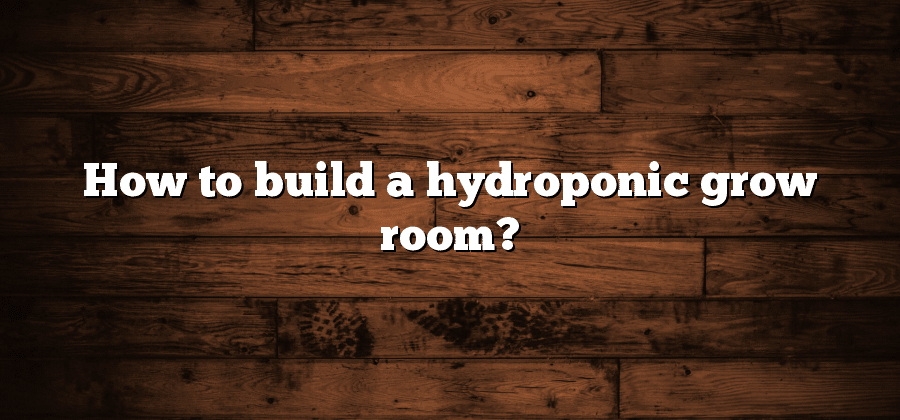Planning the Layout and Design
When it comes to planning the layout and design of your hydroponic system, there are a few important factors to consider. First and foremost, you need to determine the available space that you have for your system. This will help you determine the appropriate size and layout that will fit best in your chosen location. Additionally, you need to consider accessibility for maintenance and harvesting, as well as the placement of necessary equipment such as reservoirs and pumps.
Another crucial aspect to consider when planning the layout and design is the type of crops you wish to grow. Different plants have varying space requirements and growth habits, so it is essential to take these factors into account when designing your system. Consider the vertical space needed for taller plants, as well as the spacing requirements for optimal growth. By carefully planning the layout and design, you can ensure that your hydroponic system is efficient, productive, and visually appealing.
Choosing the Right Location
Selecting the right location for your hydroponic system is a crucial step in ensuring its success. A well-chosen location can provide the necessary environmental conditions for your plants to thrive, while a poorly chosen one can result in subpar yields and plant health. When considering the location, it is important to take into account factors such as light availability, temperature, humidity, and accessibility.
First and foremost, adequate lighting is essential for photosynthesis to occur and for your plants to grow. Ensure that the chosen location receives sufficient natural light during the day or that you have a suitable artificial lighting setup in place. Additionally, consider the location’s temperature and humidity levels. Most hydroponic plants prefer a consistent temperature range of 65-75°F (18-24°C) and a humidity level of around 50-60%. Avoid areas prone to extreme temperature fluctuations or where humidity is difficult to control. Lastly, consider the accessibility of the location for maintenance and monitoring purposes. It should be easily accessible for checking nutrient levels, adjusting lighting, and tending to any potential issues that may arise. By carefully evaluating these factors, you can choose the right location for your hydroponic system and set yourself up for a successful growing experience.
Selecting the Appropriate Hydroponic System
One of the most crucial decisions you will make when setting up your hydroponic garden is selecting the appropriate hydroponic system. With so many options available, it can be overwhelming to determine which system will best suit your needs. Therefore, it is essential to carefully consider factors such as space availability, budget, and level of expertise.
First and foremost, evaluate the space you have allocated for your hydroponic garden. If you have limited space, vertical systems or compact systems like NFT (Nutrient Film Technique) might be suitable options. On the other hand, if you have ample space, you can consider larger systems such as ebb and flow or deep water culture. Additionally, assess your budget as different hydroponic systems vary in cost. While some systems might be more expensive initially, they may provide better long-term yield and efficiency. Lastly, consider your level of expertise. If you are a beginner, opting for a straightforward system like drip irrigation or aeroponics might be more manageable, as they require less monitoring and maintenance. However, if you are experienced in hydroponics, more complex systems like continuous flow may be suitable to challenge your skills and maximize your productivity.
Building the Frame and Structure
During the construction phase of your hydroponic system, one of the most important steps you’ll need to take is building the frame and structure. This step will determine the overall stability and functionality of your system, so it’s crucial to approach it with careful planning and precision.
First and foremost, you’ll need to determine the size and dimensions of your hydroponic system. Consider the available space and the number of plants you plan on growing. Once you have the measurements, you can begin constructing the frame using sturdy materials such as PVC pipes or metal rods. Remember to reinforce the structure at key points to ensure it can support the weight of the plants and the hydroponic equipment. Additionally, make sure to create access points and pathways for easy maintenance and harvesting. Building a well-designed and robust frame will provide a solid foundation for your hydroponic system, setting you up for a successful and efficient growing experience.
Installing the Lighting System
Once the frame and structure of your hydroponic setup have been built, it is time to move on to the next crucial step: installing the lighting system. This step is essential for providing the necessary light energy that plants need to photosynthesize and grow. When it comes to selecting the right lighting system for your hydroponic garden, there are various options available. LED grow lights are a popular choice due to their energy efficiency, long lifespan, and ability to emit the specific wavelengths of light that plants require for optimal growth. Additionally, fluorescent lights and high-intensity discharge (HID) lights can also be viable options, depending on the size and specific needs of your hydroponic project.
Before installing the lighting system, it is crucial to consider the placement and spacing of the lights. The distance between the lights and the plants directly affects the intensity of lighting received by the plants. Generally, the lights should be installed at a height that allows for consistent and even light distribution across all plant surfaces. Additionally, it is important to ensure that the lighting is adjustable so that it can be raised or lowered as plants grow taller or closer to the lights. By carefully planning the installation and placement of the lighting system, you can create an optimal growing environment that promotes healthy plant development and maximizes your hydroponic garden’s overall productivity.






